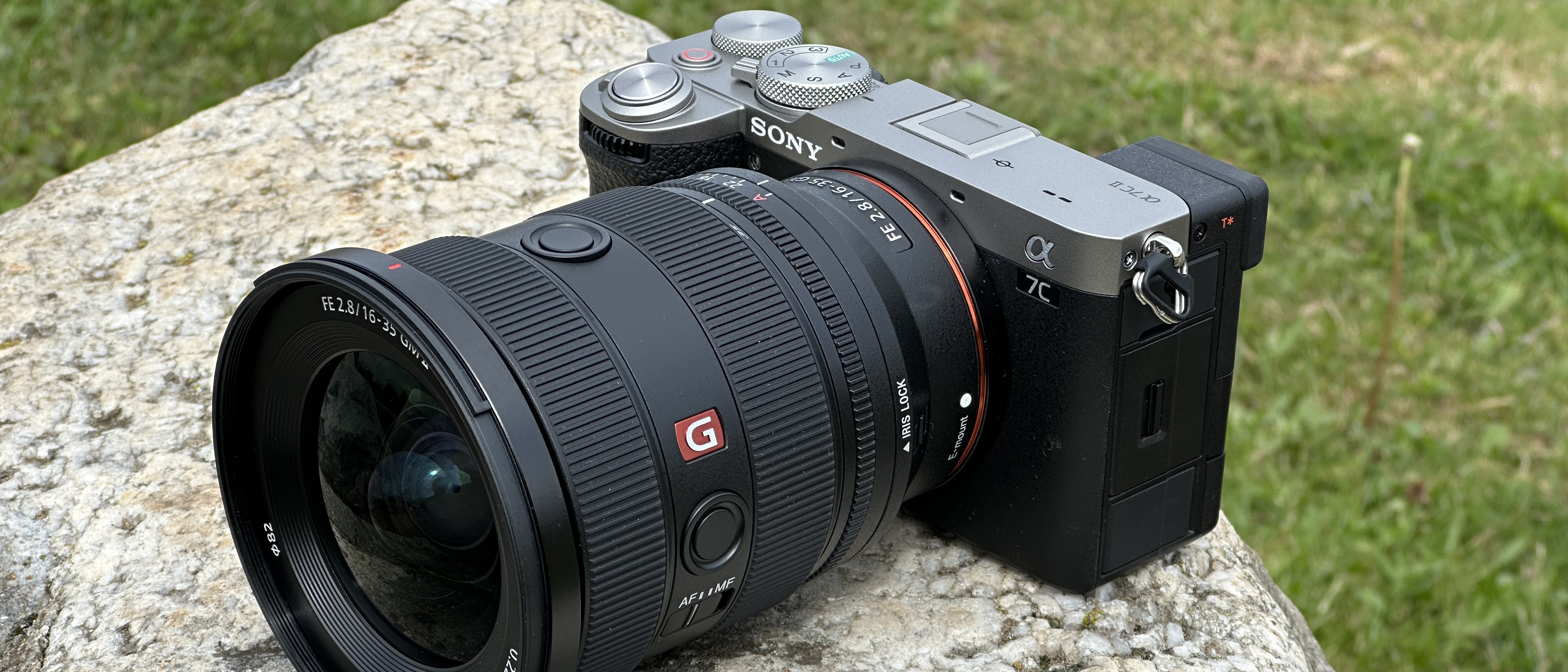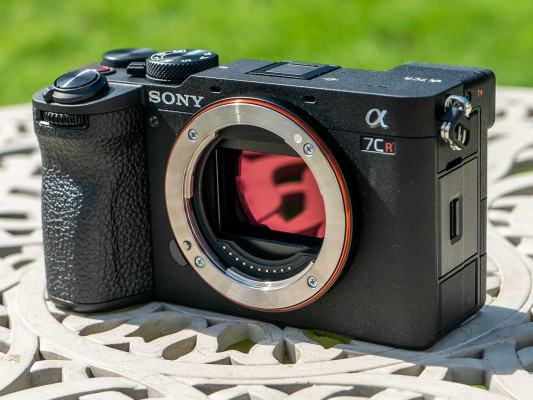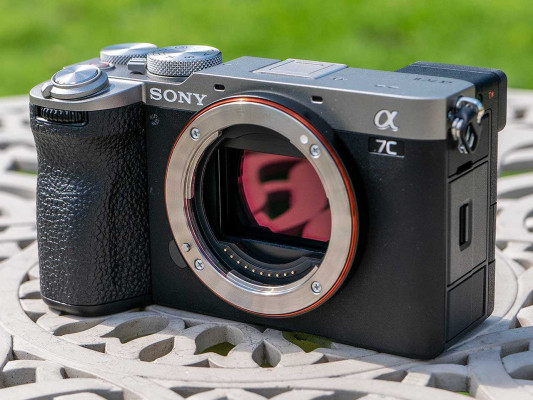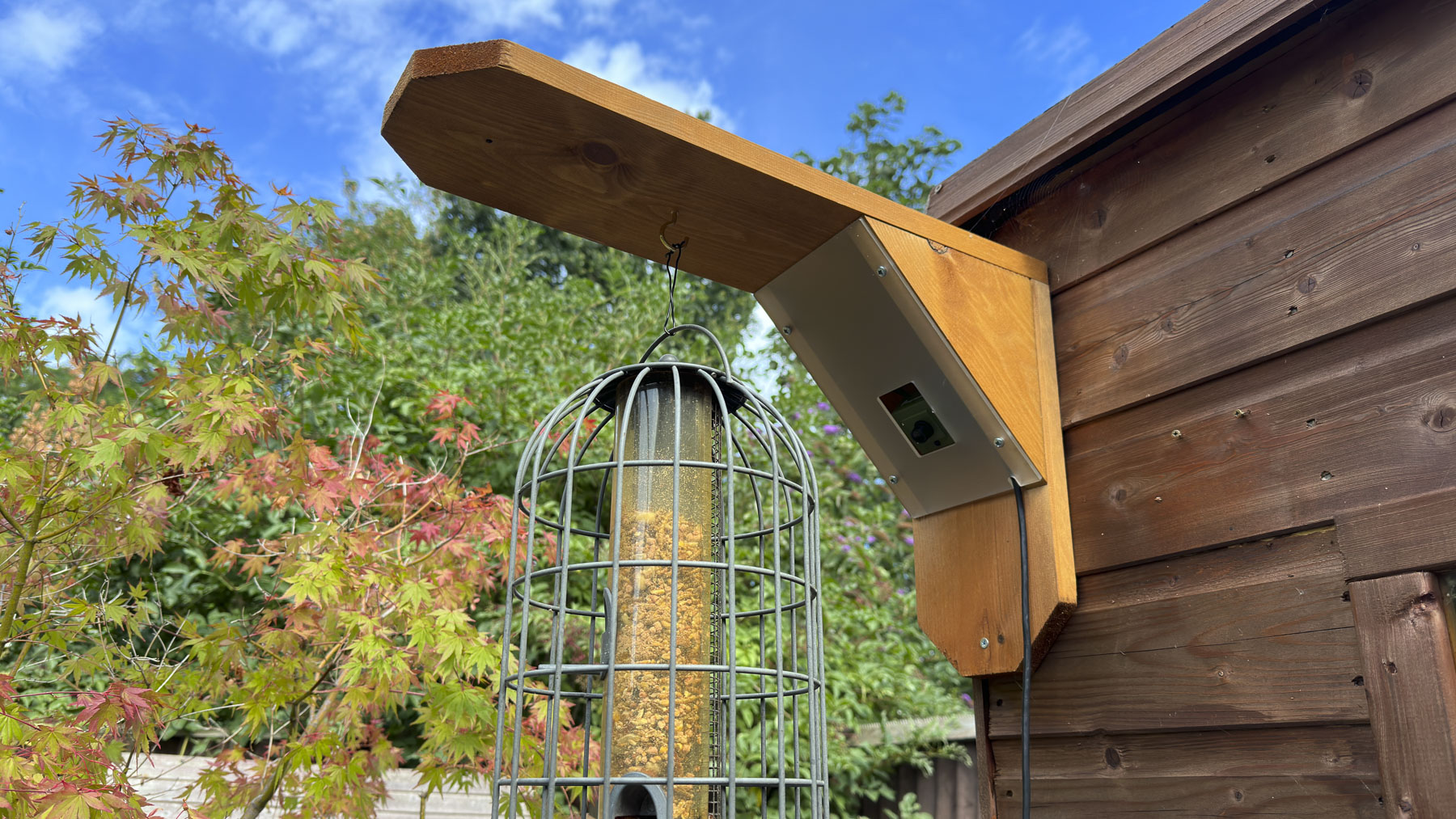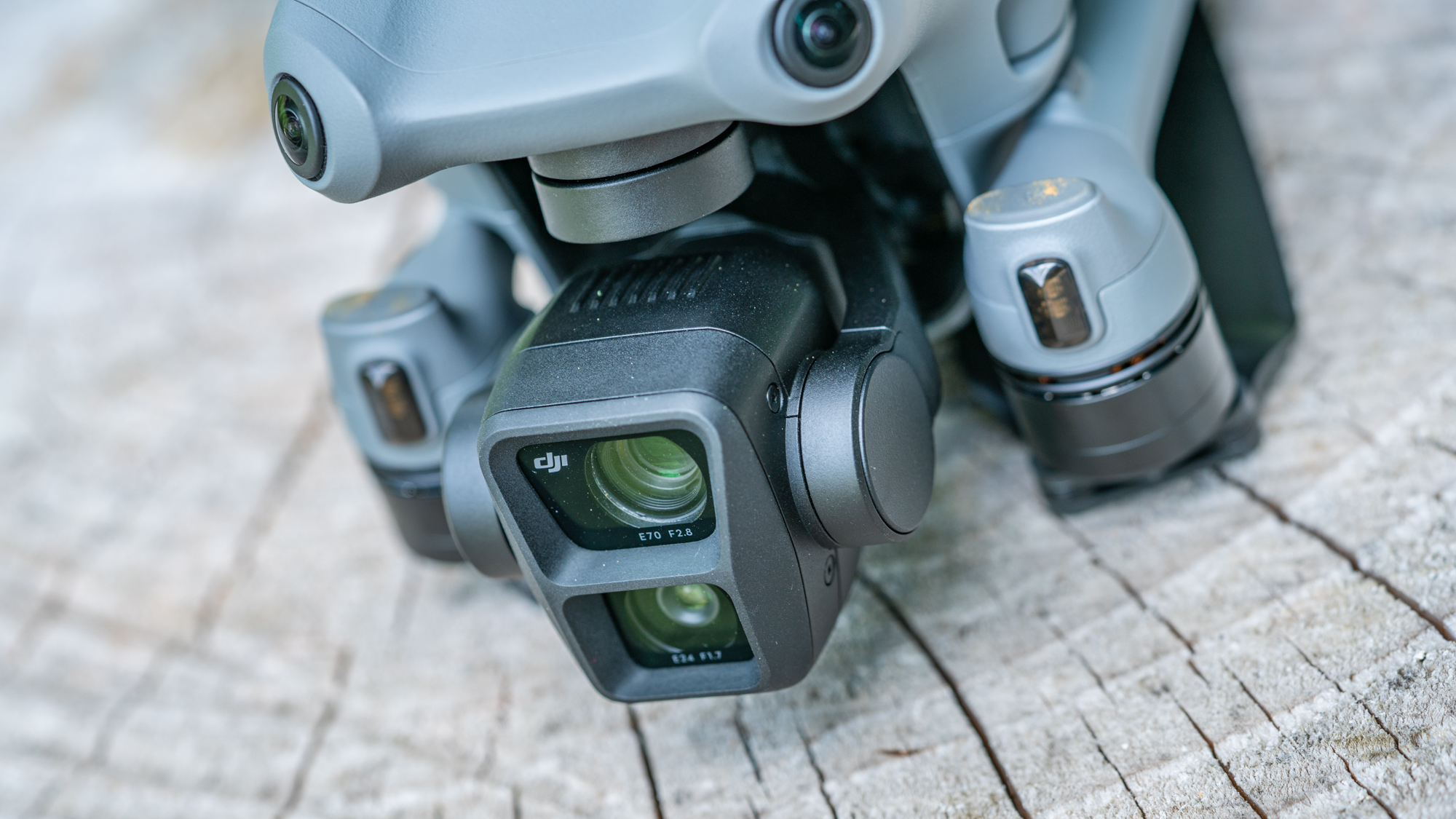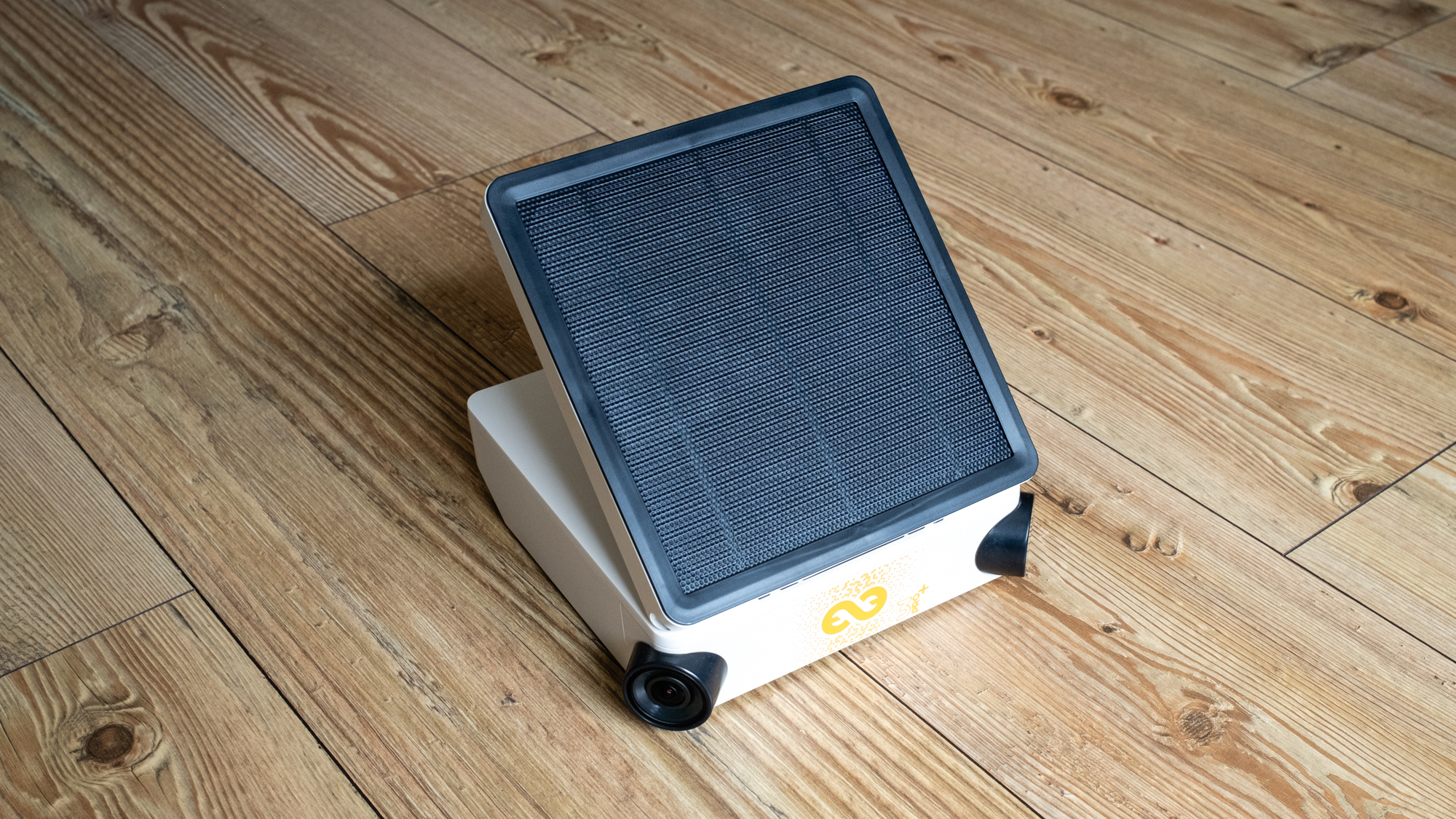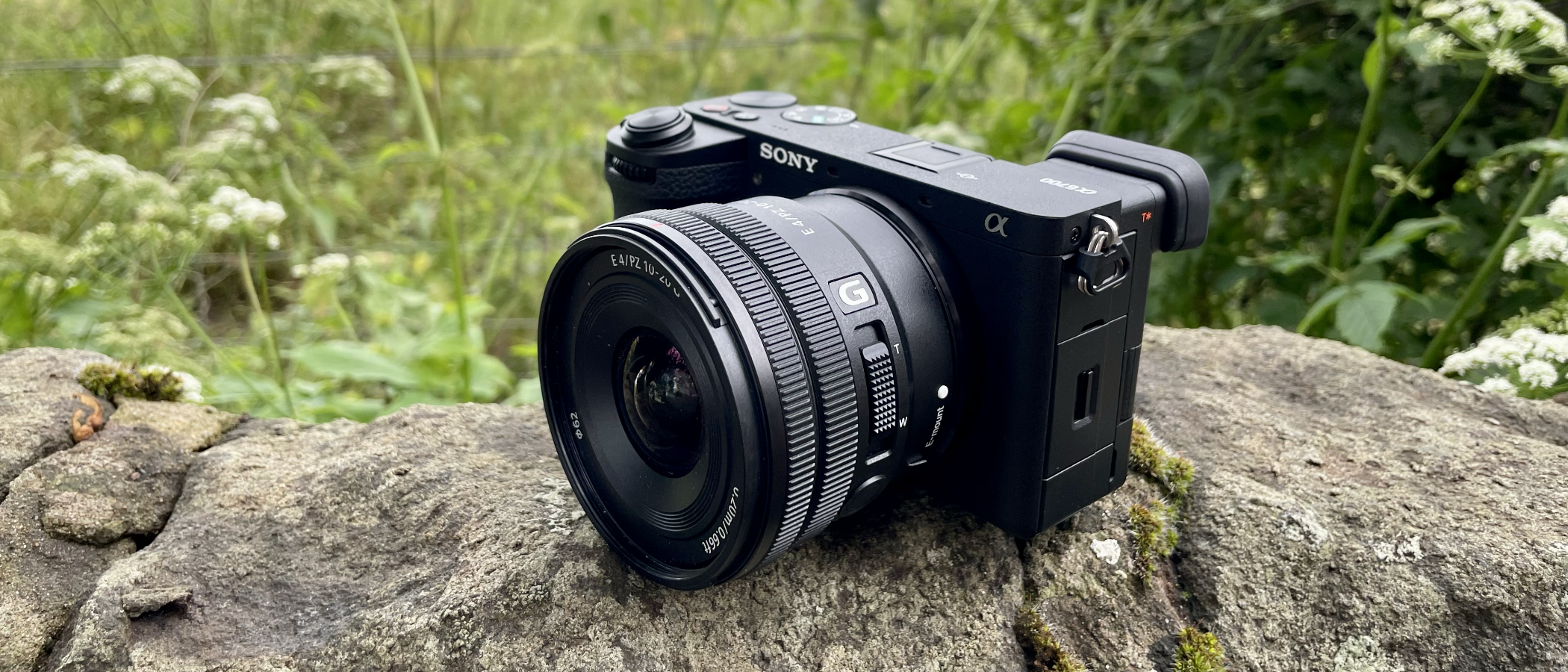Reviews

ON1 Photo RAW 2023.5 review
DPReview LatestLate last year I took a look at Photo RAW 2023, ON1 Software's long-running image management and editing toolkit. Photo RAW can trace its roots back to mid-2016 and has made big leaps and bounds in that time. And development hasn't slowed in the past eight months, with ON1 releasing a couple of significant updates to the Windows/macOS application since our last review.
Last February, Photo RAW 2023.1 arrived with an updated version of ON1's artificial intelligence-powered sky replacement technology, Sky Swap AI. It also debuted a new, more powerful healing brush tool which could be used not only to remove distractions from your image, but also to clone or reposition objects within the frame.
 |
| ON1 Photo RAW 2023.5 shown in Browse mode. |
This was followed up last June with the current release, ON1 Photo RAW 2023.5. This adds a face recovery function to ON1 Resize AI, and further improved the image enlargement tools upscaling quality as well. Working hand-in-hand with this, the NoNoise AI denoising algorithms were also tweaked for better quality when enlarging images. And there were a raft of smaller tweaks including an improved refine brush, better curves control and more.
With a fair bit new to look at, I felt it was time for an updated review! Given that much is still shared with the earlier release, I'll be focusing on the changes here and refer you to my earlier review for a more general look at ON1 Photo Raw.
Key features
- Comprehensive image management and editing features
- Accepts Raw files from 950+ cameras, phones, drones and other sources
- Automatically corrects lens defects for 1,200+ different lenses
- Allows both global and local editing including layers
- Supports multi-shot techniques like HDR, focus stacking and panoramas
- Includes updated AI tools for image enlargement, face recovery and denoising
- Pay once or with an ongoing subscription
ON1 Photo Raw 2023 is available via a one-time payment for a perpetual license or with an ongoing subscription charged monthly or yearly. Subscription customers get a choice of either the ON1 Everything or Everything Plus subscription levels.
 |
| ON1 Photo RAW 2023 shown in Edit mode with the left pane collapsed. |
The ON1 Everything subscription includes Photo Raw 2023 itself plus 200GB of cloud storage, Keyword AI standalone and ON1's Effects, HDR, NoNoise AI, Portrait AI, Resize AI and Sky Swap AI plugins, all of which can also work with third-party applications like Lightroom or Photoshop. ON1 Everything costs $7.99 when paid monthly or $89.99 annually, with a discounted price of $76.50 for the first year.
The Everything Plus subscription gives you all of that and adds access to the ON1 Plus community for tips, tutorials, ebooks, presets and more, an expanded one terabyte of cloud storage and an increase in the number of allowed activations for each product from two to five machines. Everything Plus costs $17.99 when paid monthly or $179.99 annually, with the first year discounted to $149.99.
Perpetually-licensed customers will receive the app itself plus one year of updates for $99.99, and can add all perpetual licenses for all six plugins (but not the standalone Keyword AI) for a total of $149.98. Customers who own any previous ON1 product can upgrade to ON1 Photo Raw 2023 for $79.99.
 |
| ON1 Photo RAW 2023.5 with the Presets browser open and the right pane collapsed. |
Trial version and a quick note for NVIDIA GPU owners
A 30-day free trial of ON1 Photo RAW 2023.5 is available on ON1's website. Before I go any further though, I should quickly note something which I can't recall seeing for a software review in the past.
Back in May, ON1 reported that it had discovered an issue with program crashes on startup which, it said, was specific to certain NVIDIA graphics chipsets. The following month, NVIDIA acknowledged this issue and provided a fix in its version 536.23 Game Ready Driver. (You may also know this as the F1 23 GeForce Game Ready Driver.)
I have, of course, used the most recently-available Game Ready Driver in my own testing and have seen no crashes or other untoward behavior. If you're considering purchasing or testing the trial version yourself, though, I'd recommend ensuring that your own NVIDIA drivers are up to date first.
 |
| The crops shown below were created by upsampling this Pentax K-1 II raw image by a factor of 16x its original pixel count in both ON1 Photo RAW 2023.5 and Adobe Photoshop. |
Photo RAW 2023.5 brings even better image enlargement
Probably the biggest change in the updated ON1 Photo RAW is its ability to enlarge images with better quality than before. This algorithmic improvement parallels one made last April in the separate ON1 Resize AI plugin's v2023.5 update, as does a newly-added face recovery function.
The latter is reminiscent of a tool which I saw previously in the rival Topaz Photo AI, and we'll look at it separately in a moment. But first, let's examine how the updated ON1 Resize AI algorithms perform with non-human subjects. For our first comparison, let's take a look at a Pentax K-1 Mark II shot with plenty of natural, fine detail including multiple kinds of foliage, wood grain and rock.
 |
|
| Adobe Photoshop (Preserve Details) | ON1 Photo RAW (Resize AI) |
| Crop 1 | Crop 1 |
| Crop 2 | Crop 2 |
Both versions of the original raw image were initially rendered using ON1 Photo RAW 2023.5 to give the same overall look. But one was then upsampled using ON1 Resize AI algorithms, whereas the other was created using the Preserve Details (enlargement) algorithm in Adobe Photoshop.
I've upscaled the original shot by a factor of 4x on each axis (or in other words, 16x by pixel count). Since that takes the resolution from 36 megapixels up to a staggering 577 megapixels -- far too large to display in a web browser -- clicking on the 100% crops will instead take you to a full-resolution, 144-megapixel crop from the center of each image.
 |
|
| Adobe Photoshop (Preserve Details) | ON1 Photo RAW (Resize AI) |
| Crop 3 | Crop 3 |
| Crop 4 | Crop 4 |
As you can see, ON1 Photo RAW delivers a noticeably crisper result than does Adobe Photoshop, a difference that's particularly noticeable in the texture of the rocks at frame center, as well as the wood grain of the sign.
With that said, when viewed up close like this the foliage feels a tad oversharpened and unnatural. But if you're upsampling this much, your viewers likely won't have their noses against screen or canvas. When viewed from a more reasonable distance, what here feels oversharpened will instead give the impression of more crispness and finer detail.
 |
| The crops shown below were created by upsampling this cropped Pentax K-1 JPEG image by a factor of 16x its original pixel count in both ON1 Photo RAW 2023.5 and Adobe Photoshop. |
One kind of texture to which the Resize AI algorithms in ON1 Photo RAW 2023.5 seem particularly well suited is that of feathers, fur, hair and the like. As we can see here in this shot of my Fischer's Lovebird made from a somewhat-cropped, out-of-camera Pentax K-1 JPEG, the fine feather detail holds up extremely well even to very close scrutiny.
 |
|
| Adobe Photoshop (Preserve Details) | ON1 Photo RAW (Resize AI) |
| Crop 1 | Crop 1 |
| Crop 2 | Crop 2 |
The difference in the bird's eye, though, is much less apparent, with only a very, very slight difference versus that from Photoshop's Preserve Details (enlargement) algorithms. And a final detail to note in this particular shot is that the ON1 enlargement algorithms don't emphasize noise in blurred or textureless areas like Adobe's algorithms do.
 |
|
| Adobe Photoshop (Preserve Details) | ON1 Photo RAW (Resize AI) |
| Crop 3 | Crop 3 |
| Crop 4 | Crop 4 |
For one last comparison of the resizing quality, let's take a look at a shot from the Sony A7S Mark II and at a much higher sensitivity of ISO 25,600. Not only does this give the enlargement algorithms much more noise to deal with, but this image also contains a common bugbear for AI: Text.
While repeating patterns and dense real-world details like foliage can hide AI's errors quite well, we humans are programmed to look for writing, and we notice defects in it much more easily. And that makes for a much more challenging comparison!
 |
| The crops shown below were created by upsampling this Sony A7S Mark II raw image by a factor of 16x its original pixel count in both ON1 Photo RAW 2023.5 and Adobe Photoshop. |
Not surprisingly, ON1's Resize AI algorithms struggle to deliver convincing-looking text when viewed up close, although in fairness that same text is rather blurry in the Adobe Preserve Details (enlargement) rendition. And once again, at more normal viewing distances for an image that's been magnified this much, the text defects are going to be much less noticeable.
 |
|
| Adobe Photoshop (Preserve Details) | ON1 Photo RAW (Resize AI) |
| Crop 1 | Crop 1 |
| Crop 2 | Crop 2 |
More troublesome, though, are the noise patterns. While the noise levels are noticeably higher in the Adobe-processed version of the image, they are at least quite uniformly so, making them less distracting.
In the ON1 versions, though, the noise levels vary significantly across the image. And often they do so with fairly clear, straight boundary lines between the two areas. That serves to call attention to the noise, and looks quite unnatural when viewed closely. Hopefully this is something ON1 can address as it further refines its image scaling and denoising algorithms going forwards.
 |
|
| Adobe Photoshop (Preserve Details) | ON1 Photo RAW (Resize AI) |
| Crop 3 | Crop 3 |
| Crop 4 | Crop 4 |
Face recovery works best for smaller, less-critical faces
As noted at the outset, the other significant change of ON1 Photo RAW 2023.5's Resize AI tool is the addition of a face recovery function not dissimilar to that which I saw recently in the rival Topaz Photo AI. And just as I saw with that program, while the function works in Photo RAW, it has some issues which mean it's best reserved for smaller, more peripheral faces for the time being.
Most notably, if your face occupies a large portion of the frame such as in a head-and-shoulders portrait, you'll find that enabling face recovery will likely change the look of your subject's face significantly, leaving them looking rather alien in the process.
This can be compounded by visual defects like eyes that don't point in the same directions, irises that aren't round or ears with extra lobes, etc. And the algorithm struggles quite a lot with some eyewear, too.
 |
|
| 200% Resize AI alone | 200% Resize AI w/ face recovery |
| Full image | Full image |
| 100% crop | 100% crop |
And as if that wasn't enough to persuade you to abstain from using face recovery on your portraits, its results for larger faces are very, very blurry. Clearly, then, face recovery is not intended to be used with primary subjects occupying a significant portion of the frame, only with smaller faces and ideally non-primary subjects where the precise shape of the face doesn't matter so much.
In this next example, it does a somewhat more convincing job, although the face still doesn't look entirely natural when viewed very closely. It's definitely crisper than in the version which was solely rescaled without face recovery though.
But then it's only the face which will be made crisper, with other portions of the subject at the same focal distance still retaining their original softness. (Although you will frequently notice some change to background areas near the face, too.)
 |
|
| 200% Resize AI alone | 200% Resize AI w/ face recovery |
| Full image | Full image |
| 100% crop | 100% crop |
That inability to clarify more than just the faces rather limits the utility of the function. Frankly, sharpening solely the face is just likely to draw your attention to it, making you more likely to notice the facial rendering issues. If it can't readily be used for the key faces in your image, why take that risk?
For now, this feature just doesn't feel entirely ready for real-world use, even if it hints at future possibilities. The good news is that if you do choose to use it, you can individually enable or disable the function for each detected face in the image, so it's not an all-or-nothing proposition as was Topaz Labs' equivalent when last I tested it.
Quick, capable noise reduction for moderately noisy images
Next, let's take a look at ON1 Photo RAW's noise reduction. For each of our examples, we'll compare a shot with Photo RAW's denoising disabled to versions using both of ON1 NoNoise AI's denoising models, Original and High Detail.
I'll also include a comparison to the HQ denoising in DxO Optics Pro for a baseline that has similar processing speed to ON1's algorithms, and finally to DxO's DeepPRIME-XD which I've found to be the highest-performing denoising algorithm on the market right now.
All four algorithms will run at their default strength to give a sense of what's possible without taking the time to hand-tweak results for each image.
We'll start off with a portrait shot at ISO 51200 from the Sony A7S II, and an architectural photo at ISO 51200 from the Sony A7R II.
For the portrait shot, it's immediately apparent that while ON1's High Detail model leaves a bit more noise in the image, it provides noticeably lower detail than does the Original model. This is especially apparent in the model's eyelashes in the portrait shot, as well as in the fine texture of the concrete building.
We can also see that ON1's NoNoise AI (Original) does a significantly better job at removing noise than does DxO's HQ denoising algorithm, even though both take around the same time to process each shot. (That's just a few seconds on my mid-range Dell XPS-15 9570 laptop.)
And NoNoise AI comes surprisingly close to matching the results from DeepPRIME-XD here, even though that algorithm requires about an order of magnitude longer to process each image.
Next up, we have a shot of Las Vegas' Ferris wheel and monorail taken at ISO 51200 with the Sony A7 III and another architectural detail at ISO 64000 with the Sony A7R II.
Again, it's immediately obvious just how much fine detail is being lost to ON1's High Detail model, something that's particularly noticeable in the slats at the base of the Ferris wheel. DxO's HQ algorithm leaves a good bit more noise in both shots, but also shows fewer artifacts than does the ON1 Original model.
And finally, the extra processing power expended by DxO's DeepPRIME algorithm shows up with a pretty clear advantage here.
For our last two comparisons, we have an image of a classic car shot at a much higher ISO 102400 with the Sony A7R II, and one of a motorcycle shot at the same sensitivity with the Pentax KP.
ON1's Original model again outperforms the High Detail model here, with the latter again showing some of the unsightly variation in noise levels that we saw earlier on while looking at Resize AI. Compare, for example, the high noise levels on the lower portion of the bike's gas tank with the relatively clean result just slightly further up its side.
It's also notable that for the bike shot, while ON1's Original model does squash the color noise quite well it also lifts the shadows just slightly, effectively making the shot look slightly noisier than before processing.
The car shot, meanwhile, is pretty packed with artifacts, and for both shots I'd have to give the edge to DxO Optics Pro here. While ON1 does a great job with low to moderate noise levels, it seems to struggle quite a bit to tame images with high noise levels, especially in comparison to a more processor-intensive method like DeepPRIME-XD.
Sky Swap AI can now better separate sky and subject
One final change on the image quality front is for the Sky Swap AI algorithms which can be used to simultaneously replace the sky areas of your image in a single click while also changing the aesthetic of the remainder of the image to better match the look of your replacement sky.
 |
||
| Original image | Sky Swap AI model A | Sky Swap AI model B |
| Full image | Full image | Full image |
| 100% crop | 100% crop | 100% crop |
As well as the original Sky Swap AI detection method -- now called Model A -- there's a new Model B option which is intended to better-differentiate between areas of sky and similarly-colored areas of your subject. (Think, for example, of snow alongside a white sky, or as in my example here, lightly-colored rocks.)
In my testing I found that while Method B is definitely *less* prone to selecting and replacing areas of your subject by mistake, it still has somewhat of a tendency to do so. You can, of course, fiddle with sliders to try and improve upon this, but it's not terribly easy to tune.
How noticeable these errors will be is obviously going to depend upon your subject and how closely it will be viewed. At the very least, though, the technique should now be usable for more photos than was previously the case, and for less-difficult subject separations it can do a pretty convincing job in concert with the ability to scale, position and motion blur your replacement sky.
Improvements to refinement and healing tools
ON1 Photo RAW 2023.5 brings some significant enhancements to both the Refine Mask and Healing Brushes.
Starting with the former, you can now refine an existing mask to make it much more useful by selecting from a number of predetermined 'methods' -- Hair/Branches, Hard / Diffuse Edges or Noisy Images -- or creating your own custom method for the tool. You then simply paint on the mask areas you wish to refine, and Photo RAW will change the mask as appropriate.
 |
|
| Initial image w/ custom refinement settings | Refinement painted over existing mask |
In the example above, I've first made a basic mask by selecting the Sky AI mask and then inverting it and creating a fairly detailed starting mask. Using the Hair/Branches method I then painted on the areas of that initial mask that I wished to further refine, with my brushstroke shown in red. You can see a before-and-after comparison of the resulting mask in black-on-white below.
This process really couldn't be much easier and allows for extremely detailed masking with relatively little effort. But there's also another new capability which is that you can now use the Refine Mask brush to create a mask in the first place, rather than relying on an AI-derived mask as I did here. The new mask is made simply by painting a circle around the outer periphery of the area you wish to have masked, living the inside portion unpainted.
 |
|
| AI-generated mask | Refined mask (hair/branches method) |
The Retouch brush has also been updated in ON1 Photo RAW 2023.5, and now allows for the patch sampled from elsewhere to heal the image to be modified in several ways. It can be scaled, rotated or flipped so as to better blend in with the area you're healing, and also includes two new operating modes.
In copy mode, you can copy an object from one place to another in the photo, again transforming and scaling as necessary to provide a convincing effect. In move mode, you can relocate an object within the image and the hole left in its wake will be automatically filled for you.
I found both copy and move tools rather finicky and difficult to use, though. It's difficult to mask just your subject without getting unwanted parts of the background attached to it or chunks of the subject itself missing. In part, that's because the tools sometimes disregard your selection or have geometric chunks missing from them even though you selected the entire subject.
 |
||
| Original image | Goose added using Retouch Copy | Retouch Copy glitch loses part of added goose |
For example, in the image above I successfully cloned one goose and moved it to a different portion of the sky, shrinking and rotating it somewhat as well. I was limited in where I could place it, though, because it brought along a halo of sky which only matched some portions of the image. And on trying to clone a second goose, I kept getting triangular or rectangular chunks missing despite the entire goose having been inside my selection.
Smaller UI tweaks
The remaining changes in ON1 Photo RAW 2023.5 are all rather smaller but still add to its ease of use, and so are worthy of a quick note.
Firstly, the Curves filter accessed through the Effects panel now has an underlying histogram and a gradient background which serves as a visual cue to what you'll achieve by dragging the curve in either direction. You can also now use an eyedropper tool to select and adjust a point along the curve directly from the image.
 |
| The Curves filter's new graduated background gives a visual cue as to what pulling the curve in either direction will do. For individual color channels, this includes the hue change made. |
The application now also makes better use of the scroll wheel on your mouse. You can zoom images using the Control key (Windows) or Option key (macOS) in combination with the scroll wheel and pan around the view either by using an unassisted dual-axis scroll wheel or combining the shift key with a single-axis scroll wheel for a horizontal pan.
Tool sizes can be adjusted using Control+Alt (Windows) or Command+Option (macOS) in concert with the scroll wheel. And tool feathering is the same, except substituting the Shift key for Control or Command in these combination.
Support for new cameras and lenses
One final change is support for a variety of new camera and lens models. These include the Canon EOS R6 II, Nikon Z8 and Panasonic GX7 III (aka GX9), as well as preliminary support for the Canon EOS R8 and R50. (Support is still planned for the Panasonic GH6 and S5 II, but ON1's support site notes this is taking longer than intended to be delivered.)
There are also 24 new lens profiles supporting interchangeable or fixed lenses from Canon, Fujifilm, Meike, Nikon, Panasonic, Ricoh, Samsung, Sigma, Tamron and Yongnuo.
Conclusion
From the very minor increment in its version number, one could be forgiven for thinking that the upgrade in ON1 Photo RAW 2023.5 was equally inconsequential, but that actually undersells it. Sure, this is still largely the same program as that which I reviewed a year ago, but it has nevertheless improved substantially in many respects.
In particular, I found the updated mask refinement tools to be quite impressive, as they can make very, very light work of extremely complex masking tasks. And while the face recovery tool doesn't yet feel ready for prime time, the uprated ON1 Resize AI technology nevertheless does a great job of increasing the pixel resolution of your photos prior to printing or to allow for significant cropping.
ON1 Photo RAW 2023.5 is particularly interesting if you're looking to escape the nickel-and-diming of monthly subscription fees
I continue to be impressed by ON1's noise reduction technology too, at least for images with low to moderate noise levels. What it manages is quite impressive given how relatively quickly it functions, even if much better-quality denoising is nowadays available should you be willing to spend a while waiting.
Are there some flies in the ointment? Sure, I still continued to note occasional lockups and slowness in the user interface, even if image browsing and rendering are performed quickly. And a o few of ON1's AI-based algorithms -- most notably the ON1 Resize AI (High Detail) denoising algorithm -- show some occasional issues on the image quality front.
But don't let that sell this program short. There is still a whole lot to like here, and doubly so when one considers the affordable perpetual licensing as well as an even more value-oriented upgrade program. Although you can certainly opt to use it with an ongoing subscription like many of its rivals, ON1 Photo RAW 2023.5 offers a particularly interesting proposition if you're looking to escape the nickel-and-diming of monthly fees!
| What We Like | What We Don't |
|---|---|
|
|




